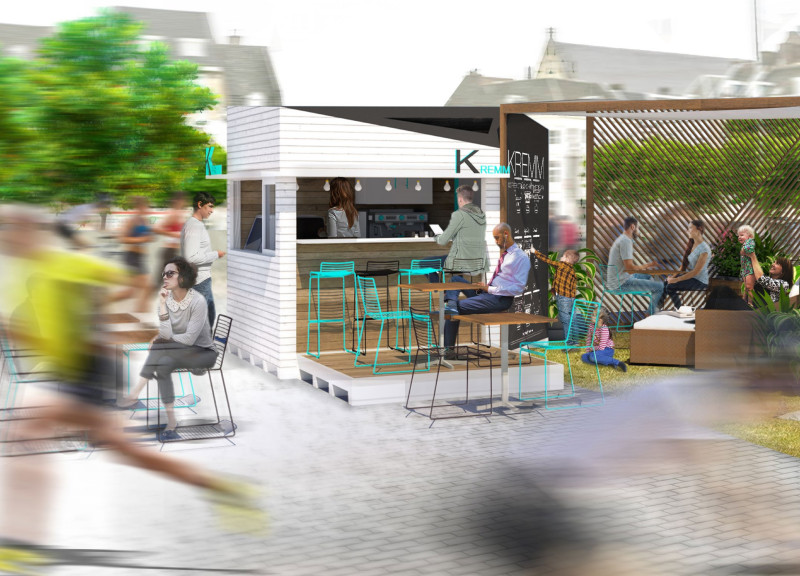5 key facts about this project
This coffee house represents much more than a place to enjoy beverages; it symbolizes a cultural hub where community members can connect, collaborate, and engage with one another. The design takes a minimalist yet functional approach, allowing the building to adapt to various social scenarios and user needs. Kremm de la Kremm effectively promotes a sense of belonging while providing the necessary amenities for a coffee shop.
The structure is divided into three main areas, each designed to fulfill specific functions that cater to both individual and communal experiences. The Café Haus serves as the primary area for coffee service, designed with an open layout to encourage interaction among patrons. The Café Bar expands the service offering, creating an environment conducive to social gatherings, while the Café Garden fosters outdoor relaxation and engagement with nature. This thoughtful zoning of space emphasizes flexibility, enabling the café to transform based on user activity and the time of day.
In terms of architectural detail, Kremm de la Kremm utilizes a mixture of materials that not only enhance its aesthetic appeal but also contribute to its operational efficiency. White siding gives the exterior a clean, approachable look, making it inviting for passersby. The use of chalkboard paint within the space allows for community interaction, letting visitors leave messages, drawings, or announcements, which enhances user involvement and ownership of the space. Reclaimed wood planks add warmth and a sense of sustainability to the interior, aligning with contemporary values of environmental responsibility.
Furthermore, the project employs structural insulated panels (SIPs) for insulation and support, promoting energy efficiency while ensuring a comfortable interior atmosphere. The skid base construction method facilitates easy relocation and adaptability of the structure, allowing it to serve different locations or community events over time.
Kremm de la Kremm is a prime example of how architecture can address social needs while promoting sustainability. The incorporation of reclaimed materials not only reduces environmental impact but also connects users to history and craftsmanship. Each design choice reflects a commitment to creating an inviting space that nurtures relationships and contributes positively to the urban fabric.
The architectural design promotes a vision of accessibility and inclusivity, aiming to break down barriers between individuals and communities. By providing a space that can easily accommodate events, gatherings, and creative activities, Kremm de la Kremm positions itself as a flexible platform for various community-oriented functions.
For those interested in exploring the architectural plans, sections, and overall design elements further, there are ample details available that reflect the innovative ideas behind this project. Engaging with these elements provides deeper insights into Kremm de la Kremm's conceptual framework and design relevance to modern architectural discourse. The project illustrates how a simple coffee house can evolve into a vital community resource that emphasizes connectivity through thoughtful design and architecture. It invites readers to consider the impact of such spaces within their own communities and prompts further exploration of how architectural ideas can be utilized to enhance urban living experiences.


























